Content
When hearing the word grapes, many gardeners in temperate latitudes still imagine mainly the luxurious fruit-bearing vines of the southern regions. And if grapes grow on someone’s plot in the middle zone, then the imagination imagines powerful shoots of Amur or maiden grapes, which serve perfectly as decoration for walls or fences. It is quite difficult to imagine grapes producing berries of good dessert taste in the middle zone, and this fact seems incredible even to experienced gardeners. However, this is becoming possible thanks to the emergence in recent years of new very early hybrid forms of grapes, the ripening time of which is already approaching 100 days and may even be shorter.
Judging by its description of the variety and reviews of it, the Rhombik grape, for example, has such characteristics, a photo of which you can see below.
Actually, it is not yet a variety, but it would be more correct to call it a hybrid form of grapes undergoing testing. Since it appeared almost a few years ago, it has not yet become widespread among gardeners, although it has interested many enthusiastic winegrowers with its interesting characteristics.
History of the origin of the variety and its description
The Rombik grape is the creation of the famous wine breeder Evgeniy Georgievich Pavlovsky.Having been involved in viticulture since 1985, he has developed dozens of the most diverse and interesting hybrid forms, many of which have been tested and grow in private and industrial gardens.
Perhaps the main advantage of this hybrid form is its extremely early maturation. The grapes begin to ripen 80-90 days after the start of the growing season. Even experienced winegrowers have a hard time believing this, however, this fact has already been confirmed by many gardeners. Many winegrowers confirm that by the very beginning of August, the grape bunches not only have time to fully ripen, but are even slightly overripe on the bushes and begin to raisin. The video below clearly illustrates this fact.
And the ripening of Rombik grape bunches begins in mid-July. In some southern regions, ripening dates may even shift to the beginning of July.
Grape bushes of this form have strong growth energy, are distinguished by the massive size of the bushes, and the shoots branch well. To avoid overloading the bushes with the harvest, it is necessary to normalize the inflorescences. You can leave a maximum of two brushes on one vine.
The vine has time to fully ripen to its entire length during the growing season. Cuttings of this grape form have good rooting.
The fruits can be left hanging on the vine even after ripening. They begin to dry directly on the bush and gradually turn into raisins. Some people like this taste of grapes even more than fresh. They consider it more delicate and piquant.
Regarding wasp damage, reviews from winegrowers differ - some claim that they use a protective net against wasps, while others claim that this hybrid form of grapes is practically not damaged by wasps.
Regarding the yield, the description states that Rombik is a high-yielding form, but so far no one has been able to provide verified clear data on this matter.
This hybrid form is highly frost-resistant; the bushes can withstand down to -23°C. This fact may contribute to the spread of Rombik grapes in relatively more northern latitudes. Although it is necessary to cover it for the winter. But due to the early stages of ripening, it will have time to ripen at the latitude of the Moscow region and even to the north.
This hybrid form of grapes is characterized by fairly high resistance to many diseases characteristic of grapes, which is confirmed by numerous reviews. Therefore, treatments against diseases can be purely preventive.
Fruit characteristics
This hybrid form of grape received its name for the original shape of the fruit, which is, in a sense, unique. But this grape has other characteristics that distinguish it from other forms.
- The brushes are characterized by a fairly regular conical shape, while the looseness of the bunches is average. That is, it cannot be said that the berries in the clusters are tightly packed together, but they do not have the ability to crumble in the hands, but quite hold their shape. This is very convenient for harvesting, since the brushes, after being removed from the vine, are optimally placed in the prepared container.
- The size of the brushes is quite large - each weighs on average from 500 to 1000 grams.
- A special feature of this form of grape is that the berries are firmly attached to the grapevine, so you don’t have to worry about the berries scattering or falling off during the ripening process.
- The berries are quite large in size, each weighing from 10 to 15 grams or even more.
- The shape of the berries, as is obvious from the name, really resembles a diamond slightly smoothed at the corners.
- When ripe, the berries turn dark purple and later become almost black.
- The berries contain a small amount of seeds.
- The skin is quite thin and cannot be felt at all when eaten.
- The flesh is also dark and has an attractive crunch.
- The taste of the grapes is moderately sweet, harmonious with very original fruity tones.
- Rhombik grape berries are characterized by good commercial qualities and are quite suitable for transportation.
- Cracking of berries is usually not observed.
Advantages and disadvantages
Of course, the main advantage of this form of grape, as noted above, is its very early ripening. There are also other advantages that allow winegrowers to turn their attention to Rombik.
- Attractive appearance of berries and atypical taste;
- High resistance to diseases;
- Durable for transportation.
Among the shortcomings, one can note only the relative youth of the hybrid, which does not allow us to give stable recommendations for its cultivation. Some winegrowers also note insufficient sugar content in the berries and small clusters.
Reviews from gardeners
Since the Rhombik grape form appeared quite recently, there are still few full-fledged reviews about this hybrid, but in general, gardeners confirm the declared characteristics, especially the early ripening periods.
Conclusion
Rombik grapes will be a real find for beginning winegrowers who live north of the Rostov region. Possessing high disease resistance, very early ripening and an unconventional sweet taste, it will decorate any garden plot.
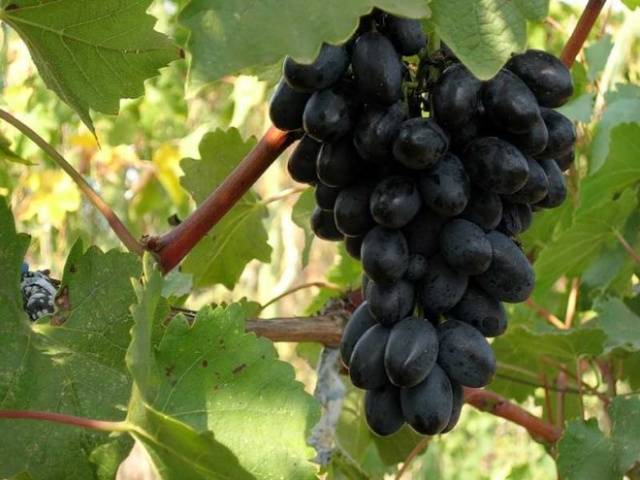
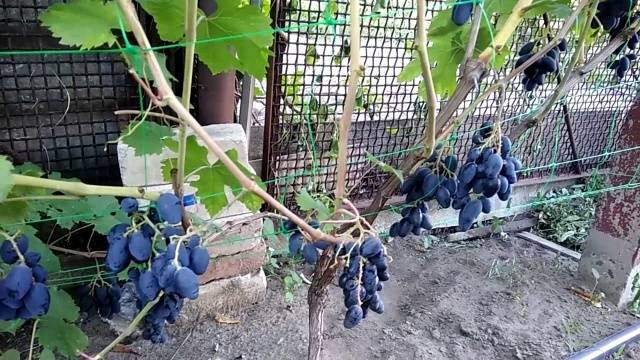
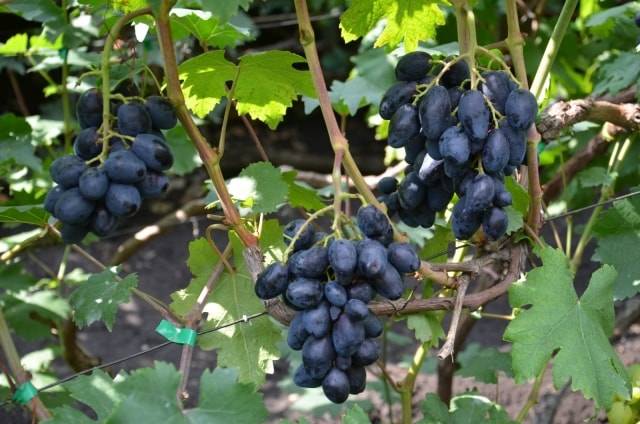
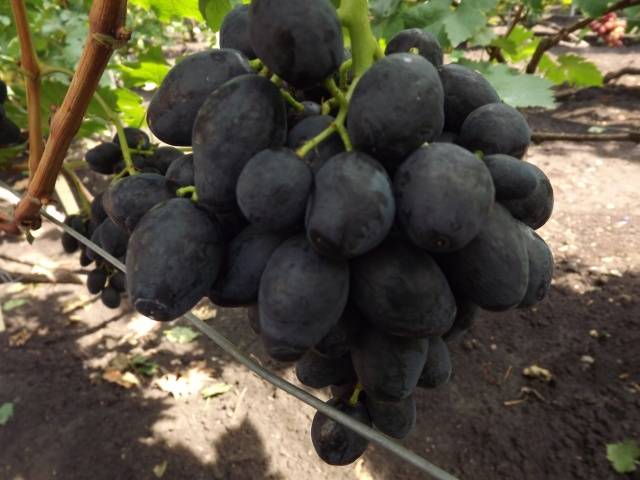
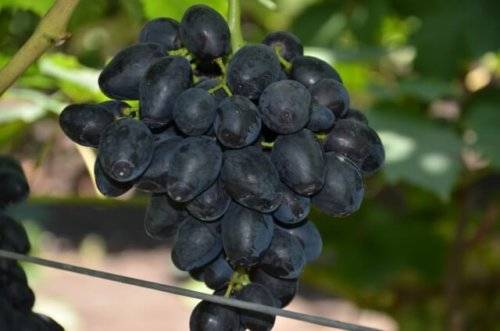
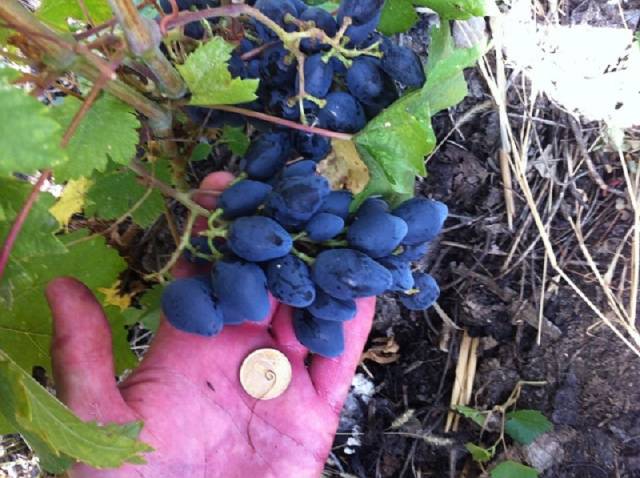
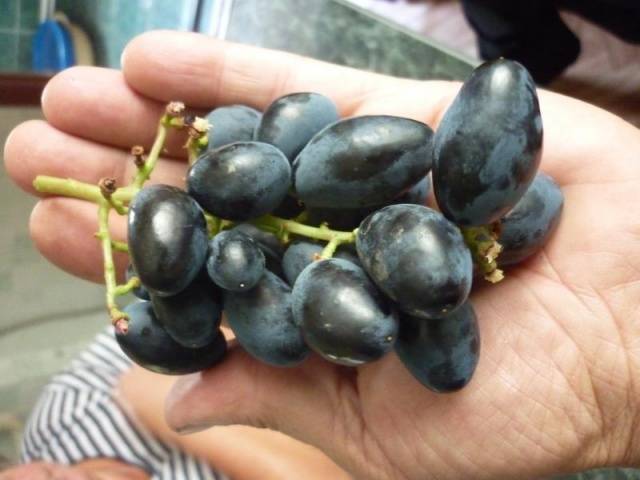
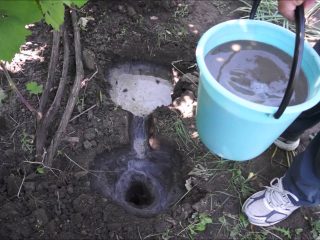
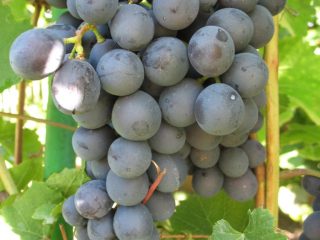
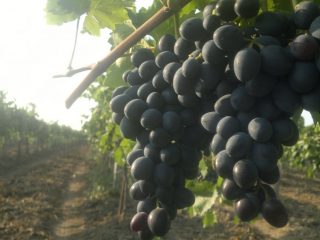
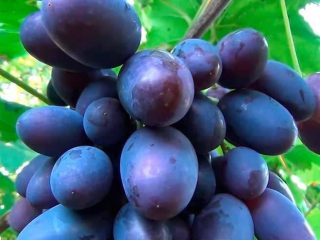
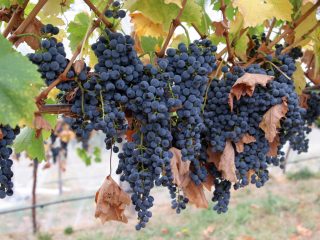
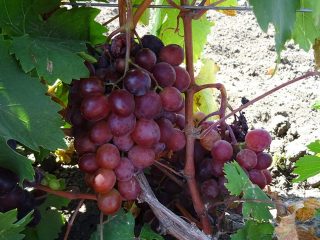
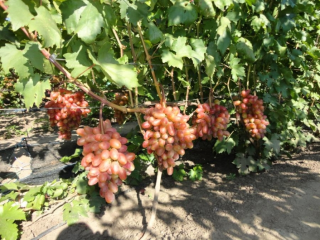
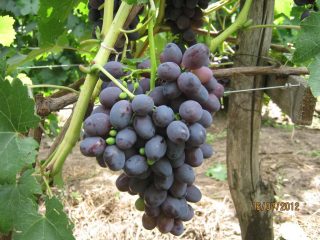
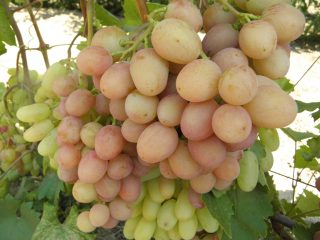
I received the signal in the second year after planting in the greenhouse, in the third year I received about 3 kg, the brushes are not large, the bush is very tall and can probably stretch everything without rationing. The vine ripens well. cuttings do not root well. In my conditions, the berries give a clear mango flavor in the aftertaste. It is better to plant outside, as it will ripen under any conditions.
After 2 cold seasons after planting Rombik, now it has given its first fruits. The bush is overloaded. There are a lot of clusters, but they are not large. Today, August 2, 2020, I picked the first ripe bunch. The berry is only 5g, I did not weigh the bunch. Sugar 16 BRICS. There is no acid. The taste is excellent. These are the earliest grapes that have ripened at this time NOT on the south wall of the house in my 25 years of viticulture.